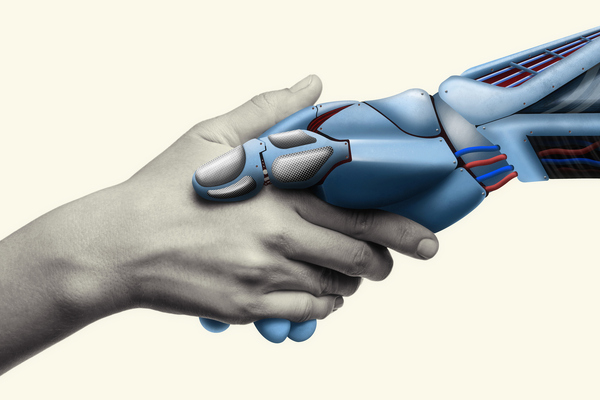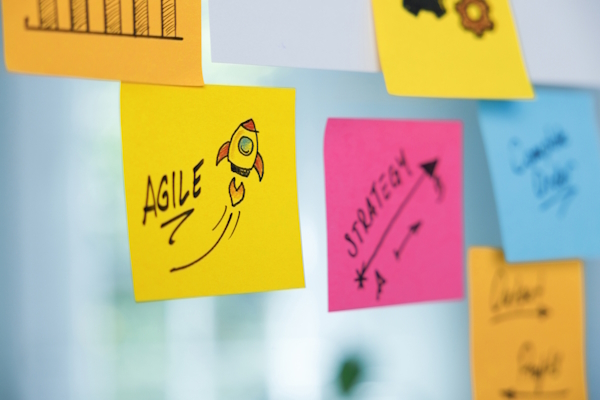Why next-generation tech is the next big leap towards the cities of the future
How AI and digital twins have helped five European cities make their infrastructure more sustainable

Two years ago, low rainfall, early snowmelt, rising temperatures and other factors connected to climate change caused Italy’s worst drought in seven decades. The water level in the Po River, the country’s longest and largest waterway, dropped by two and a half metres (eight feet) below its average. The arid conditions exposed the Po’s white, sandy bottom and prevented irrigation in the Po Valley, northern Italy’s breadbasket, which supplies 40 per cent of the country’s food, including rice, corn, tomatoes and Parmesan cheese. And water scarcity reaches beyond farming and food supply. Towns in the Po Valley, situated in one of Italy’s richest regions, had to ration water.
Unfortunately, the drought was not a freak incident. “Climate model projections for Europe indicate that meteorological droughts, due to lacking precipitation, will become increasingly more frequent and severe, especially in the second part of the 21st century,” researchers studying the event wrote in a paper published in the journal Science.
The severity of the situation isn’t lost on UK and EU leaders. In late June, the UK capital hosted London Climate Action Week. The event, which is part of the UN’s Race to Resilience campaign, organised more than 300 in-person and virtual gatherings, including an event at Bentley’s UK headquarters, aimed at advancing the conversation about sustainability and global solutions to climate change.
In late May, water resilience was the theme of EU Green Week, a conference taking place primarily in Brussels. In May, the European Environment Agency (EEA) also released its first European Climate Risk Assessment (EUCRA) report, as part of the European Union’s strategy on climate change adaptation. The report noted that prolonged droughts cause large economic damage and can severely degrade water resources, and that extreme precipitation and flooding has increased in large parts of Europe. “The trend is expected to rise further in warming climate,” researchers said.
One solution that can help countries make their infrastructure more sustainable and prepare it for the warming climate are digital twins. Infrastructure digital twins are virtual representations of roads, power grids, water and sewer systems, buildings and even cities. By incorporating real-time data into the digital models, infrastructure digital twins offer city leaders and other users a comprehensive and accurate representation of their assets and systems.
Bentley Systems, an infrastructure engineering software company, has been building digital twin technology that allow users around the world to design, assemble and operate their infrastructure assets, make them more sustainable and resilient. “We must be incredibly efficient and holistic in what we do and how we approach these water management challenges,” said Thomas Krom, the environment segment director at Seequent, the Bentley subsurface company. Krom said the adoption of open, digital standards will promote interoperability and interconnectivity between all vested interests.
In the UK, Seequent and Bentley Systems have provided software for projects such as High Speed 2 (HS2), a high-speed railway which will connect London with Birmingham, Manchester, and the East Midlands by 2033. HS2 has a sustainability vision of zero-carbon rail travel. “The way we travel – and the way we build our transport networks – are critical to our response to this global emergency,” HS2 says on its website.
Many users across the UK and EU and elsewhere around the world have already deployed digital twins to build, upgrade and operate their water systems. Here are a few examples:
Updating London’s Victorian-era sewer system
London’s 150-year-old sewer system put an end to the Great Stink that plagued the British capital in the mid-1800s. But today, with London home to eight million people, the system needs an upgrade. Costain, VINCI and Bachy Soletanche are working in a joint venture to design, construct and replace the eastern section of the sewer system with a new super-sewer called the Thames Tideway Tunnel project. Bentley’s digital twin and other solutions are part of that work, helping the project team visualise the entire construction process. When finished, the new sewer system will mitigate wastewater pollution and significantly improve the water quality of the River Thames over the next 120 years.

Keeping cosy in Helsinki
Winters in Finland tend to be cold, long and dark. (It’s the trade-off residents make for the white nights and spectacular midnight sunsets in late spring and early summer.) Even in Helsinki, the capital city, a cold snap can bring temperatures down to -20°C (-4°F).
Most of the country’s cities use district heating systems that transmit heat from a central source through a network of insulated water pipes to apartment buildings and offices. In fact, the country maintains over 16,000 kilometres (10,000 miles) of district heating pipelines and about 3,000 kilometres of water and sewerage lines in Helsinki and the surrounding metropolitan area. Some parts of these networks are aging, and Helsinki needed a better way to manage it.
Helsinki’s Environmental Services Authority, Silo AI, worked with Bentley Systems to build a digital twin of the heating system. It allowed city pipeline operators to prioritise maintenance to areas where leaks are likely to occur. The predictive utility network maintenance system included several data sources, AI models and a visual analytics user interface that uses Bentley’s iTwin Platform.

Stopping leaks in Greece
Leaks from public water systems plague municipalities around the world. Greece, for example, once lost about a quarter of its public water supply to leaks every year, according to a 2017 report from the Organization for Economic Co-operation and Development (OECD).
As a result, Greek households consumed more drinking water than any other country in the EU at the time. To improve water and wastewater regulation in the city of Kozani, in northern Greece, local officials worked with DEYAK Water Utility and Bentley to build a water digital twin to map and analyse the water system, which supplies the city’s 60,000 residents. The digital twin enabled the team to quickly identify leaks and fast-track repairs.
Improved leak management has cut down on water waste. With 20 per cent less water flowing through the network, Kozani’s residents can enjoy lower utility bills.
Around a water tower in Belgium
Many cities rely on water towers that store drinking water for residents. The city of Liège, Belgium, is no different. Its massive water tower, built in 1981, could hold 500 cubic meters of water (132,000 gallons). But it was aging, suffering from cracks, and the city needed to fix it. The most conventional way to survey a water tower involved inspections by workers or by manually studying drone photos. But the owner, Société Wallonne des Eaux (SWDE), wanted to find a more efficient solution.
SWDE worked with Bentley to build a digital 3D model of the water tower and then use AI, such as deep learning, to automate crack detection. SWDE dispatched a drone to capture 3,000 images, used them to create a “reality mesh” of the tower, and then unleashed the AI to find cracks. The scan revealed 1,704 cracks in the tower, nearly a third of which could not be detected by the human eye. The digital replicas helped SWDE determine how to prevent water tower degradation and accurately plan what renovation work was needed – and save money along the way.

AI and digital twin technologies enabled Société Wallonne des Eaux (SWDE) to quickly survey the tower’s damage and accurately plan renovation work.
There’s no doubt that, as predictions of climate change become reality, our lives are becoming less predictable and the infrastructure they depend on more vulnerable. But technological revolutions such as AI and digital twins mean we’re also better equipped to spot the cracks in that infrastructure before they develop into something worse – and develop truly considered virtual solutions that enable us to break ground in real life, with real confidence.
To learn more, visit www.bentley.com.
By Deb Landau, Writing Consultant, Bentley Systems

Business Reporter Team
Related Articles
Most Viewed
23-29 Hendon Lane, London, N3 1RT
23-29 Hendon Lane, London, N3 1RT
020 8349 4363
© 2024, Lyonsdown Limited. Business Reporter® is a registered trademark of Lyonsdown Ltd. VAT registration number: 830519543





